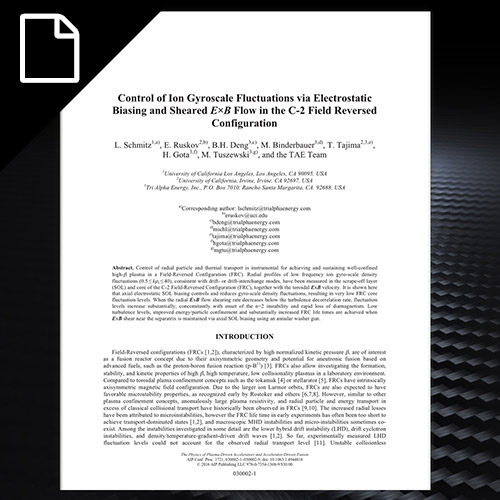
Dec 2016 | Research Library, Papers, Diagnostics, Edge Control, Experiment, Fusion Energy, Fusion Research, Fusion Science, Fusion Technology, Stability, Transport, Turbulence
December 2016 | L. Schmitz | Nature Communications | Paper
An economic magnetic fusion reactor favours a high ratio of plasma kinetic pressure to magnetic pressure in a well-confined, hot plasma with low thermal losses across the confining magnetic field.
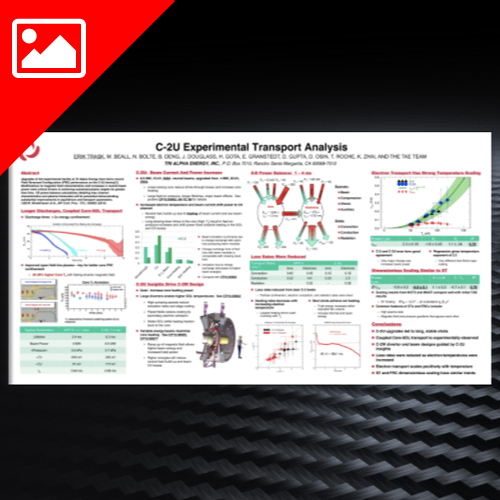
Oct 2016 | Research Library, Posters, Experiment, Fusion Energy, Fusion Research, Fusion Science, Fusion Technology, Plasma Research, Transport
October 2016 | Erik Trask | APS-DPP | Poster
Upgrades of the experimental facility at TAE Technologies have led to record Field Reversed Configuration (FRC) performance on the C-2U device.
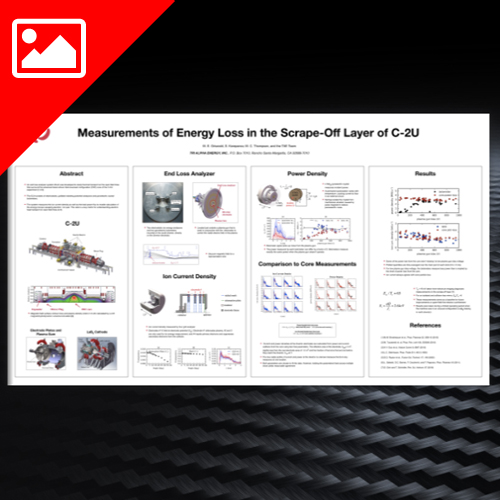
Oct 2016 | Research Library, Posters, Experiment, Fusion Energy, Fusion Research, Fusion Science, Fusion Technology, Plasma Research, Transport
October 2016 | M.E. Griswold | APS-DPP | Poster
An end loss analyzer system (ELA) was developed to study thermal transport on the open field lines that surround the advanced beam-driven field-reversed configuration (FRC) core of the C-2U experiment.
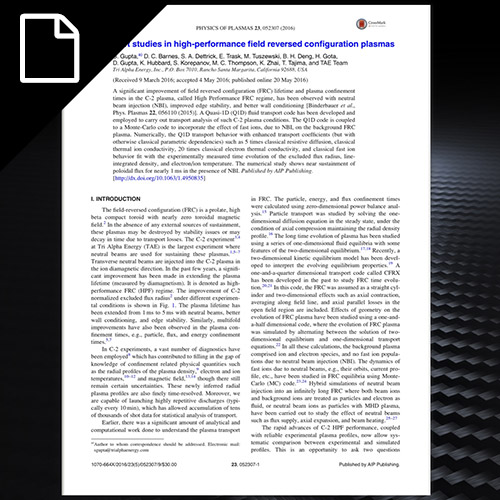
May 2016 | Research Library, Papers, Confinement, Fusion Energy, Fusion Research, Fusion Science, Fusion Technology, Simulation, Theory, Transport
May 2016 | S. Gupta | Physics of Plasmas | Paper
A significant improvement of field reversed configuration (FRC) lifetime and plasma confinement times in the C-2 plasma, called High Performance FRC regime, has been observed with neutral beam injection (NBI), improved edge stability, and better wall conditioning.
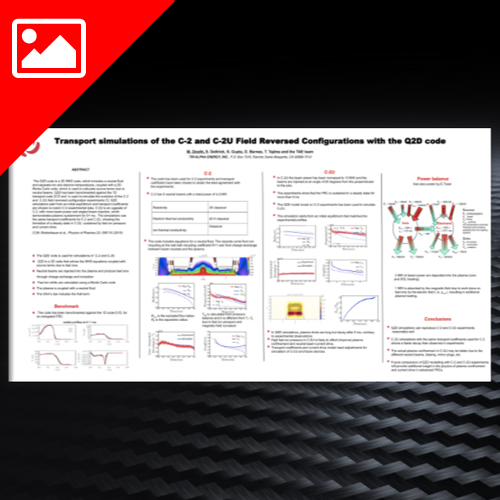
Apr 2016 | Research Library, Posters, Fusion Energy, Fusion Research, Fusion Science, Fusion Technology, Plasma Research, Simulation, Transport
April 2016 | Marco Onofri | Sherwood | Poster
The Q2D code is a 2D MHD code, which includes a neutral fluid and separate ion and electron temperatures, coupled with a 3D Monte Carlo code, which is used to calculate source terms due to neutral beams.

Mar 2016 | Research Library, Papers, Diagnostics, Edge Control, Experiment, Fusion Energy, Fusion Research, Fusion Science, Fusion Technology, Stability, Transport, Turbulence
March 2016 | L. Schmitz | AIP Conference Proceedings | Paper
Control of radial particle and thermal transport is instrumental for achieving and sustaining well-confined high-β plasma in a Field-Reversed Configuration (FRC). Radial profiles of low frequency ion gyro-scale density fluctuations (0.5 ≤ kρs ≤ 40), consistent with drift- or drift-interchange modes, have been measured in the scrape-off layer (SOL) and core of the C-2 Field-Reversed Configuration (FRC), together with the toroidal ExB velocity.




